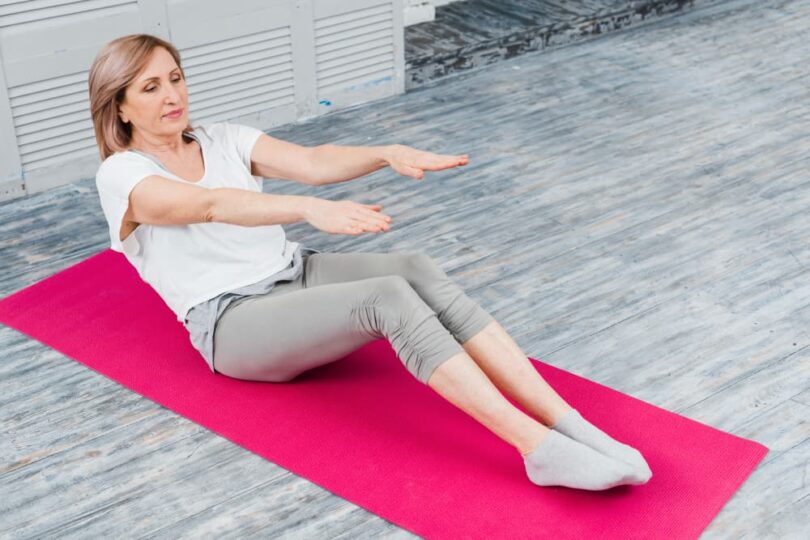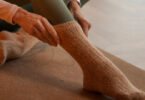Table of Contents
Introduction
Finding the perfect yoga mat for joint pain can make all the difference in your yoga practice. Whether you have arthritis, old injuries, or just sensitive knees and elbows, the right mat provides the cushioning and support you need to enjoy your practice without discomfort. This comprehensive guide will walk you through everything you need to know about choosing the best yoga mat for joint pain, including features to look for, top recommendations, and helpful tips to enhance your yoga experience.
Introduction and Importance of Yoga Mats for Joint Pain
Yoga Mat for Joint Pain: Why It Matters
Joint pain is a common issue that can affect your daily life and activities. For those who practice yoga, a supportive mat is crucial to avoid exacerbating pain and to ensure a comfortable experience. Using the right yoga mat for joint pain can significantly reduce discomfort, allowing you to reap the full benefits of your practice.
Understanding Joint Pain
Joint pain can arise from various causes, such as arthritis, injuries, or overuse. It commonly affects the knees, elbows, and wrists, making activities like yoga challenging. Symptoms include stiffness, swelling, and tenderness, which can hinder your ability to perform poses comfortably. Choosing a mat designed to alleviate pressure on these sensitive areas is essential.
How Yoga Helps with Joint Pain
Yoga is renowned for its benefits on joint health. Regular practice can improve flexibility, strengthen muscles around the joints, and enhance overall well-being. Specific poses, such as child’s pose, cat-cow stretch, and gentle twists, are particularly beneficial. However, to fully enjoy these benefits, you need a mat that offers adequate support and cushioning to prevent further strain on your joints.
Features to Look for in a Yoga Mat for Joint Pain
Thickness and Cushioning
When it comes to joint pain, thickness matters. Mats that are too thin can fail to provide the necessary padding, while excessively thick mats might reduce stability. The ideal thickness for joint support is generally between 6mm and 15mm. This range ensures that you have enough cushioning to protect your knees and elbows without compromising your balance during poses.
Material and Durability
The material of your yoga mat can impact its comfort and longevity. Mats made from TPE (thermoplastic elastomer), natural rubber, or high-density foam are excellent choices for joint support. These materials are durable, eco-friendly, and provide a good balance between cushioning and firmness.
Non-Slip Surface
A non-slip surface is essential to prevent injuries, especially for those with joint pain. Look for mats with textured surfaces or those made from materials that naturally provide grip. This feature ensures that your mat stays in place during practice, offering stability and safety.
Size and Portability
While a larger mat can provide more space for movement, portability is also a consideration. Standard yoga mats are typically 24” wide and 68-72” long. Ensure your mat is light enough to carry easily, and if possible, choose one with a carrying strap or bag for convenience.
Choosing the right yoga mat for joint pain is about balancing these features to find the perfect fit for your needs. In the following sections, we’ll delve deeper into specific recommendations and additional tips to enhance your practice.
Related Article: How Thick Should Your Gaiam Yoga Mat Be? A Comprehensive Guide
Top Yoga Mats for Joint Pain
Best Yoga Mats for Joint Support
Finding the perfect yoga mat for joint pain can seem daunting, but I’ve compiled a list of the best mats that provide excellent support and comfort. These mats are highly recommended for their cushioning, durability, and overall effectiveness in relieving joint pain.
ProsourceFit Extra Thick Yoga Knee Pad
The ProsourceFit Extra Thick Yoga Knee Pad is an excellent choice for anyone with sensitive knees or elbows. With its 15mm thickness, it provides exceptional cushioning without sacrificing stability. This mat is perfect for floor exercises and poses that put pressure on the joints. Additionally, it is lightweight and portable, making it easy to carry to and from your yoga sessions.
Gaiam Essentials Thick Yoga Mat
For those looking for a budget-friendly option, the Gaiam Essentials Thick Yoga Mat is a great pick. This mat is 10mm thick, offering substantial padding to protect your joints during various poses. Its non-slip surface ensures you stay stable, while the included carrying strap adds convenience. Despite its affordability, it doesn’t compromise on quality or comfort.
SukhaMat Yoga Knee Pad
The SukhaMat Yoga Knee Pad is designed specifically to cushion your knees, ankles, and sit bones. This 25mm thick pad can be used on its own or with your existing yoga mat for extra support. Its compact size makes it highly portable, and its TPE material ensures durability and grip. This pad is particularly useful for those who need targeted joint support.
Incline Yoga Mat
The Incline Yoga Mat stands out with its 25mm thickness, providing unparalleled joint protection. It’s especially suitable for taller practitioners who require more space and cushioning. The mat’s non-slip surface and moisture-resistant properties make it ideal for sweaty sessions. Plus, its ribbed texture enhances grip, ensuring stability throughout your practice.
JELS Extra Thick Yoga Mat
The JELS Extra Thick Yoga Mat is another top contender for joint pain relief. With a thickness of 12mm, it offers excellent cushioning while maintaining a firm, supportive surface. This mat is perfect for various yoga styles and exercises, and its non-slip surface prevents slipping and sliding. The JELS mat is also lightweight and comes with a carrying strap for easy transportation.
Comparison Table
| Yoga Mat | Thickness | Material | Non-Slip Surface | Portability | Special Features |
|---|---|---|---|---|---|
| ProsourceFit Extra Thick | 15mm | TPE | Yes | Lightweight | Great for sensitive knees and elbows |
| Gaiam Essentials Thick | 10mm | PVC | Yes | Strap Included | Budget-friendly, substantial padding |
| SukhaMat Yoga Knee Pad | 25mm | TPE | Yes | Compact | Targeted joint support, highly portable |
| Incline Yoga Mat | 25mm | TPE/Natural | Yes | Lightweight | Extra thick, suitable for taller users |
| JELS Extra Thick | 12mm | PVC | Yes | Strap Included | Versatile, firm support, non-slip surface |
Choosing the Right Mat
When selecting a yoga mat for joint pain, consider the features that matter most to you, such as thickness, material, and portability. The mats listed above are all excellent options, each with its unique benefits. Whether you need extra cushioning, a non-slip surface, or a lightweight design, there’s a mat that fits your needs.
Additional Tips and Considerations
Extra Accessories for Joint Support
In addition to using a yoga mat designed for joint pain, there are several accessories that can further aid in protecting and supporting your joints. These accessories can make a significant difference in your comfort and safety during yoga practice.
Yoga Knee Pads
Yoga knee pads are small, portable cushions that provide extra padding for your knees. They can be placed on top of your yoga mat or used independently. These pads are particularly helpful for poses that require kneeling or placing weight on your knees, reducing pressure and preventing pain.
Wrist Supports
For those with wrist pain, wrist supports can be a game-changer. These supports are designed to stabilize and cushion your wrists, making it easier to hold poses that put strain on them. They are especially beneficial for poses like plank and downward-facing dogs.
Elbow Cushions
Elbow cushions provide additional padding for your elbows, which can be particularly useful during poses that involve placing weight on your forearms. These cushions help distribute pressure evenly, reducing discomfort and preventing joint pain.
Yoga Mat Maintenance for Longevity
Keeping your yoga mat clean and well-maintained not only extends its lifespan but also ensures that it continues to provide the support and comfort you need. Here are some tips to keep your mat in top condition:
Regular Cleaning
Regularly cleaning your yoga mat is crucial to prevent the buildup of sweat, dirt, and bacteria. Use a gentle, non-toxic cleaner or a mixture of water and mild soap to wipe down your mat after each use. Allow it to air dry completely before rolling it up.
Proper Storage
Store your yoga mat in a cool, dry place away from direct sunlight. Excessive heat and UV rays can degrade the material over time, reducing its effectiveness. If possible, use a carrying bag to protect your mat when it’s not in use.
Avoiding Heavy Wear
While it’s important to practice regularly, try to avoid heavy wear on your mat by alternating between different parts of the mat during your practice. This helps distribute wear and tear evenly, prolonging the life of your mat.
Incorporating Joint-Friendly Yoga Practices
In addition to using a supportive yoga mat and accessories, incorporating joint-friendly yoga practices can further protect your joints and enhance your overall experience.
Gentle Poses and Modifications
Choose gentle yoga poses that are easy on the joints, such as child’s pose, cat-cow stretch, and gentle twists. Modify poses as needed to reduce strain on sensitive areas. For example, use blocks or straps to adjust the intensity of a pose.
Proper Warm-Up and Cool-Down
Always start your practice with a proper warm-up to prepare your joints and muscles. Similarly, end your practice with a cool-down to gradually bring your body back to a resting state. This helps prevent injuries and reduces joint stiffness.
Conclusion
Choosing the right yoga mat for joint pain can make a significant difference in your practice, allowing you to perform poses comfortably and safely. A good mat provides the necessary cushioning and support to protect your joints, enabling you to enjoy the many benefits of yoga without discomfort.
When selecting a yoga mat, consider factors such as thickness, material, non-slip surface, and portability. Each of these elements plays a crucial role in ensuring that your mat meets your specific needs. The mats we’ve highlighted, such as the ProsourceFit Extra Thick Yoga Knee Pad and the Gaiam Essentials Thick Yoga Mat, offer excellent options for different preferences and budgets.
In addition to a supportive mat, incorporating accessories like knee pads, wrist supports, and elbow cushions can further alleviate joint pain. Regular maintenance of your mat, including cleaning and proper storage, helps maintain its effectiveness and longevity.
Finally, practicing joint-friendly yoga poses and modifications, along with a proper warm-up and cool-down, can enhance your overall experience and promote joint health. With the right tools and practices, you can enjoy a fulfilling yoga journey that supports your well-being and comfort.
Remember, your yoga mat is more than just a piece of equipment; it’s a crucial part of your practice that can significantly impact your physical health. So, take the time to choose a mat that suits your needs and helps you achieve a more enjoyable and pain-free yoga experience.
Related Article: The Top 7 Gaiam Yoga Mats for Your Practice







